Growing up Sunset
THE U.S.S. LING - SUNSET PARK'S NAVY
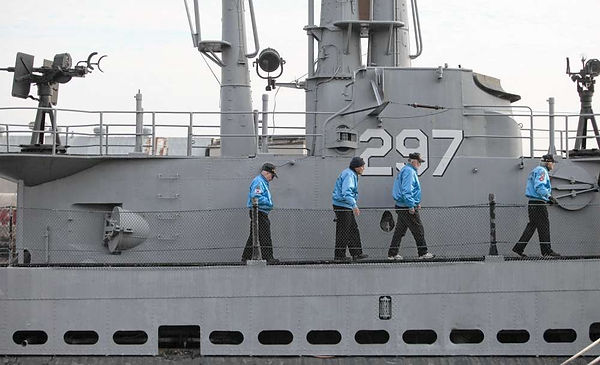
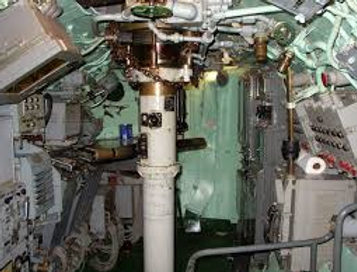


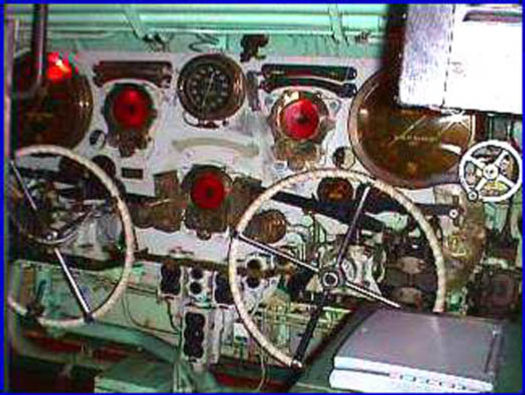
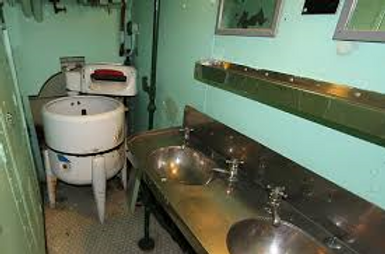

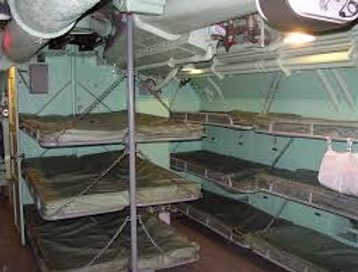
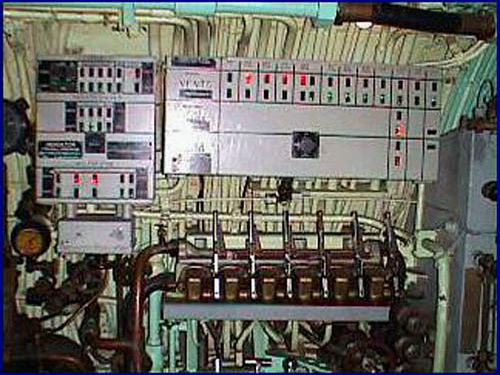

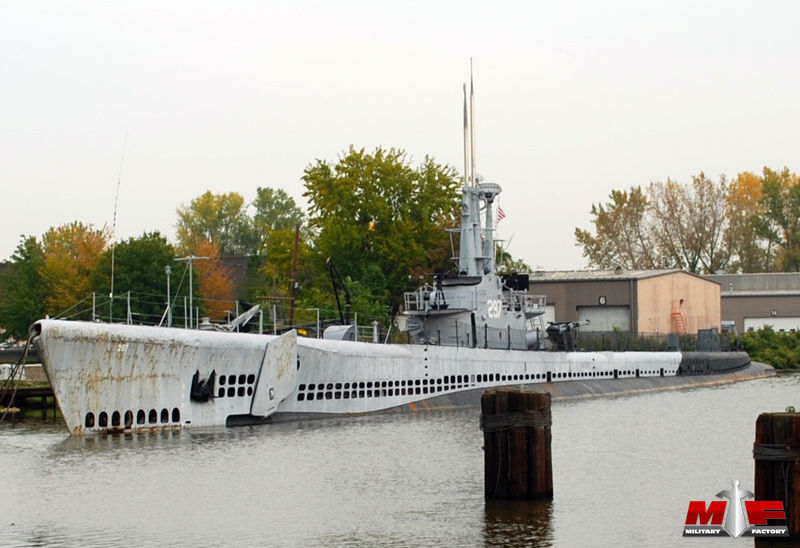
Back in the day, Sunset Park had its own "navy" - well, at least we had one ship - a submarine - the U.S.S. Ling
It was moored (parked) at the foot of 52nd Street behind the Naval Reserve building.
When I took this photo, I had to crop the top so you wouldn't see the TV antenna.
Kids were taken on tours of the sub.
This was the USS Ling on its maiden cruise in 1945 - a shakedown - to see how everything worked when under way. Notice the cannons on either side of the Con Tower
This is what was called the Christmas Tree.
That board of lights tells the crew member the condition of each hatch (door). If any are open it glows bright red.
It is not a good idea to go under water with a hatch open...
This may surprise you, but this is how you "drive" the submarine
We are all familiar with the periscope. The Commander "peeks" in and through mirrors can see above the surface of the water.
But you can only use this very close to the surface.
Notice how cramped the area is. On submarines, the basic rules of the military - like saluting are suspended because of the close, intimate quarters.
Speaking of close quarters, notice the bunks (beds). And please don't think that those beds on the left are king size for more comfort - those are two twin bunks each.
You have to get along real good with your bunk mate.
Movies about life on a sub are usually shown in a more exciting light. But in every day life there was laundry to be done. Here is a washing machine with a wringer.
Here are some visitors walking along the narrow deck.
Here are the torpedo tubes. I was on a sub once that squeezed extra space by putting a bunk under a full sized torpedo being stored for use...imagine the dreams...
Here is a 1:32 size model replica of the USS Ling done in the basement of Mario Grima
The other model is sitting on a Sear home Table Saw...a really great tool for any homeowner (I've had one for over 30 years and it still works great).
Sadly, around 1972 we lost our submarine. But it isn't too far away - for the full story - see my notes below.
USS Ling (SS/AGSS/IXSS-297) is a Balao-class submarine of the United States Navy, named for the ling fish, also known as the cobia. The ship is docked (since 1972) at the New Jersey Naval Museum in Hackensack, New Jersey and has guided tours available to the public.
History
Ling was laid down 2 November 1942 by the Cramp Shipbuilding Company of Philadelphia. She was launched 15 August 1943, sponsored by Mrs. E. J. Foy, and was moved to the Boston Navy Yard for completion and testing. Ling was commissioned on 8 June 1945, with Commander George Garvie Molumphy in command.
After shakedown and further installations, Ling headed out to sea to test her equipment 15 September 1945. The submarine based at Naval Submarine Base New London in Connecticut until she sailed 11 February 1946 for the Panama Canal Zone, arriving eight days later. She operated out of Panama until 9 March when she sailed north. She completed inactivation 23 October at New London, decommissioned 26 October 1946, and entered the Atlantic Reserve Fleet.
In March 1960, Ling was towed to Brooklyn, New York, where she was converted into a training ship at the Brooklyn Navy Yard, simulating all aspects of submarine operations. She was reclassified an Auxiliary Submarine (AGSS-297) in 1962.
Ling received one battle star for World War II service. Ling was reclassified a Miscellaneous Unclassified Submarine (IXSS-297), and struck from the Naval Register, 1 December 1971.
Museum ship
Six months later the old 297 was donated to the Submarine Memorial Association, a non-profit organization formed in 1972 with the purpose of saving Ling from the scrap yard. They petitioned the Navy to bring the boat to Hackensack, New Jersey to serve as a memorial "...to perpetuate the memory of our shipmates who gave their lives in the pursuit of their duties while serving their country". Many citizens and corporations contributed time, professional services, and funds toward the restoration of Ling. She arrived at her present home in New Jersey in January 1973, where she has been restored to near-mint condition—scrubbed, painted, and polished for public tours—through the efforts of the association. The compartments have been refurbished and outfitted with authentic gear that recreates the bygone era of the World War II battle submarine. She is now the centerpiece of the New Jersey Naval Museum at 78 River St., Hackensack, New Jersey.
X-rays showed that the submarine's five safes contained documents and metallic objects, but the combinations had long been lost. On 27 January 2006, Jeff Sitar, the eight-time world champion locksmith, opened the safes using only his fingers and an electronic sound amplifier, rather than drills or explosives. In the safes, he found a wide variety of objects, including a dozen pennies, two .45-caliber bullets, a ring of keys, many training and maintenance manuals and parts catalogs from the 1940s and 1950s, and two one-quart cans of 190-proof ethanol. (Despite the inevitable jokes that it was the private stash of the yeoman, the alcohol would have been used for cleaning electrical contacts.)[8]
In the American-produced Russian language film Katya shot in 2010, the Ling was used for a set to depict the Soviet K-129 diesel-electric powered submarine which sank on 8 March 1968 northwest of Oahu.
Site
Since 1972, the New Jersey Naval Museum had paid one dollar per year to rent its riverside site for Ling. In January 2007, the North Jersey Media Group, owner of the site, informed the museum that the site was going to be sold for redevelopment within the year and that the museum and submarine would need to be relocated. Nevertheless, the museum remains in operation at the same site as of 2012. Update Sept 2013: the museum itself is closed due to damage in 2012 from Hurricane Sandy. Tours are still being given of the sub. The outside artifacts can still be visited.
Freshwater flow in the Hackensack has been considerably altered by the Oradell Dam. The river has only been channelized to a point at the Riverbend in Hudson County. The accumulation of silt affords navigation only for small boats. The fate of the Ling may ultimately be connected to the ability for it to be moved from its location.
The Court Street Bridge, just downstream of the museum, is the most upstream bridge over the Hackensack River required by federal regulations to open on request. In 1999, the Code of Federal Regulations regarding bridge openings were changed at the request of Bergen County that it be required to open within four hours of a request, which had not occurred since 1994. The decision to re-build the bridge with an operable swing span was a matter of controversy.